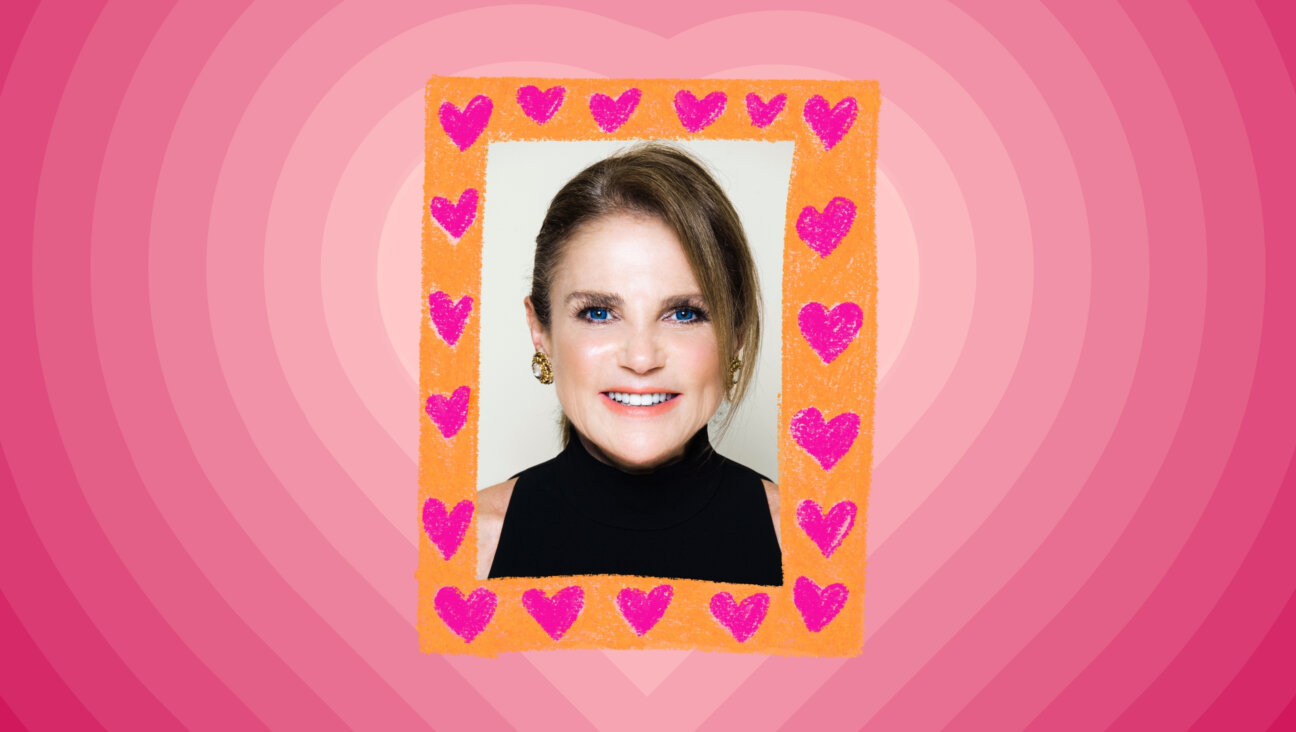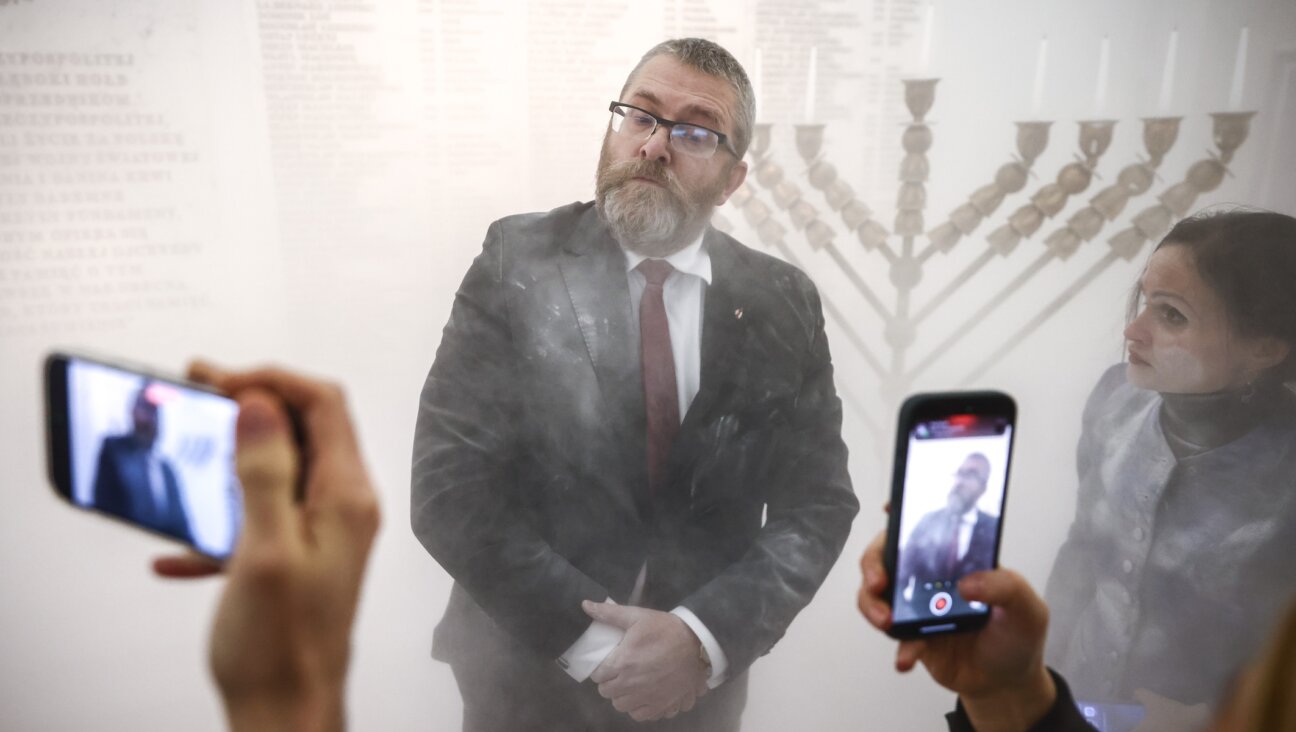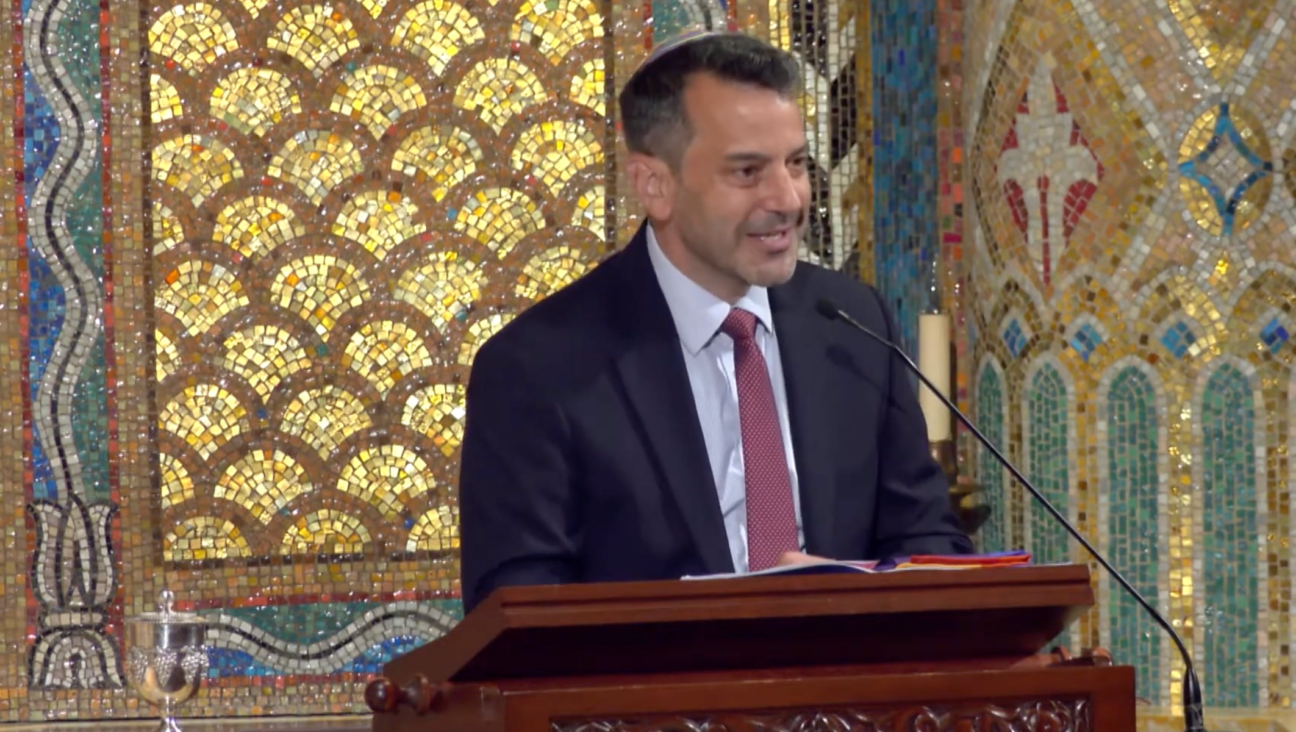How One Artist Found Inspiration in the Margins Of Ancient Hebrew Books
Doodlers, beware. Your scribbles could outlive — and outshine — you.
Artist Zeva Oelbaum has found inspiration in the endpapers of 18th- and 19th-century Hebrew books, transforming doodles made by Central and Eastern European students in the bindings of their seforim into richly toned gelatin silver prints. The fragmented images are largely indecipherable, but they evoke the spirit of a faraway, lost world.
The idea was sparked by a book passed down in Oelbaum’s family for several generations — a volume from a Sepher HaMagid printed in Slavuta, Russia, in 1814. The book, which features biblical commentary from several scholars, was used by students in the Telzer Yeshiva, a bastion of pre-Holocaust Hasidism, before it was acquired by Oelbaum’s maternal grandmother in Lithuania. Oelbaum has vivid memories of poring over the blue pages of this book, which was relegated, among others, to the basement of her childhood home in Kansas City, Mo. Unable to make sense of the palimpsest but drawn to its lyricism, she imagined how the worn artifact traveled, in her words, from “hand to hand” — the title that she gave to a recent exhibition of the work at Hirschl & Adler Galleries on the Upper East Side of Manhattan.
It is the “energy of the markings,” Oelbaum said, that draws her to these books, and also the idea that “the men who made them couldn’t have foreseen what they would have looked like with the passage of time.” In this sense, the 18 photographs in this series (the choice of the number that represents life in Jewish tradition was no coincidence) relate to Oelbaum’s earlier body of work, inspired by the discovery of a Victorian botanical journal in an antiques shop, with shadow impressions of preserved wildflowers seeped into the pencil notations of its pages. The common denominator is a fascination with found objects, particularly handwritten documents that evolve and remain alive, as well as the artist’s role as “a conduit reinterpreting something from the past.”
Oelbaum, who majored in anthropology as an undergraduate at Brandeis University in the mid-1970s, has infused this sense of humanity throughout her work. While studying abroad in Jerusalem (on her father’s side, she traces her lineage back to Safed as early as 1872), she traveled throughout the Middle East, photographing remnants of Jewish communities in Afghanistan, Iran and Egypt. (Some of these pictures are now part of a permanent video display at the Museum of Jewish Heritage in Manhattan.) Following graduation, she moved to New York to partake in an internship program at the then-newly-formed International Center of Photography and pursue a career as a documentary photographer. She said that even in her work as a commercial photographer, “I found the beauty of abstract qualities in the things I photographed.”
She always pursued personal projects on the side — from the 2004 documentary “Rene and I” (about a twin brother and sister who survived Josef Mengele’s torture at Auschwitz), on which she was an executive producer, to a botanical Victorian journal purchased for $100 while vacationing in Maine. After sharing photographs of this object with a literary agent, she landed a book deal with the luxury imprint Rizzoli, which published “Flowers in Shadow” in 2002, along with a second book, “Blue Prints,” featuring photograms made using cyanotypes — a vintage process that creates blue images. These publications caught the eye of Shelley Farmer, director of the modern division at Hirschl & Adler. Farmer gave Oelbaum her first significant gallery representation.
While preparing a talk for her 2003 solo show, “Efflorescence,” Oelbaum first revisited the Hebrew books that had been stored away in a box for over a decade after her parents died. Delving into research on these endpapers, she learned that her treasured books were hardly special and that these common scribbles had been completely overlooked by scholars.
“I took her into the stacks, pulled books off the shelves and showed her that these scribbles were bilik vi borscht — as cheap as beets,” recalled Philip Miller, director of New York’s Klau Library at Hebrew Union College-Jewish Institute of Religion. In fact, several of these examples also became her subjects. While Miller, like his colleagues, remains unfazed by this familiar phenomenon, he finds the artist’s approach “absolutely fascinating” and speculates that critical bits of social history might be gleaned from these artifacts.
Similarly, Brad Sabin Hill, dean of the library at YIVO Institute for Jewish Research, was delighted when she approached him. Sabin translated many of the layered markings for Oelbaum. “It was the first time I saw anyone take an interest in this,” he said, noting that these endpapers are practically ubiquitous in Hebrew booklore and generally insignificant — a repository for practicing penmanship and doodling mindlessly in lieu of paper, which was expensive and scarce at the time.
Nonetheless, he feels that this “gobbledygook” deserves to be looked at more closely, citing the famous statement by the late Jewish Theological Seminary talmudic scholar, Saul Lieberman, that “it is forbidden to have a course in nonsense” but “the history of nonsense” is “scholarship.”
Despite her focus on the visual aspects of this material, Oelbaum is considering a book that would combine artwork with scholarly and literary essays. For now, the series, with prints in editions of three each, most priced from $1,400 to $5,000, remains on view at www.hirschlandadler.com, and two diptychs in sepia and gold tones — “1764 Karlsruhe 4” and “1860 Warsaw 3” — are included in a summer sampling of work by gallery artists. The National Yiddish Book Center, located in Amherst, Mass., also plans to exhibit the photographs and to host related programming sometime in 2008 or 2009, after the completion of a planned addition to its current building.
But with their quiet beauty and subtle power, the images will endure well beyond these ephemeral exhibitions. “Whatever she begins with,” Farmer said, “Zeva transforms it, through her lens and creative printing processes, into a completely different object that holds its own in the 21st century.” This isn’t surprising for an artist so concerned with preserving fragile relics. On the most basic level, Oelbaum explained, “I always feel bad when I find somebody’s efforts in an antique store or basement.” She was quick to add, “I hope my negatives aren’t being offered in a box five for a penny in a hundred years.”
Jeannie Rosenfeld, a former editor at Art + Auction Magazine, is a writer covering the fine art market.
A message from our Publisher & CEO Rachel Fishman Feddersen

I hope you appreciated this article. Before you go, I’d like to ask you to please support the Forward’s award-winning, nonprofit journalism so that we can be prepared for whatever news 2025 brings.
At a time when other newsrooms are closing or cutting back, the Forward has removed its paywall and invested additional resources to report on the ground from Israel and around the U.S. on the impact of the war, rising antisemitism and polarized discourse.
Readers like you make it all possible. Support our work by becoming a Forward Member and connect with our journalism and your community.
— Rachel Fishman Feddersen, Publisher and CEO























